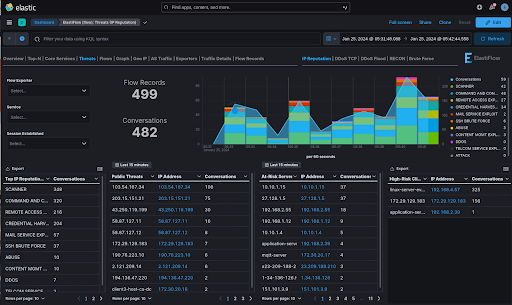...and why self-hosted can be so bright and sunny!
Over the last 30 years, the use of SaaS solutions has grown by over 2900% from zero. According to Gartner, the revenue generated by SaaS applications is expected to reach close to $200 billion in 2023. No wonder, SaaS is an easy way to use applications without having to deploy, support, or worry about huge capital expenditures.
SaaS is easy to use and can be easily expanded in features and power without needing to hire more people. This helps to make things run smoothly and predictably. So, with all this convenience, you should be sleeping better at night… right? Read on.
The Dark Side of the SaaS Coin
Choosing a SaaS solution generally involves making a number of compromises. Using a SaaS service can reduce the need for extra resources. However, there are drawbacks to consider before choosing this option.
Data Security
When companies rely on a third party to protect their data, they give up some control over their security practices. They have to trust that the SaaS provider is following all the necessary security standards. Furthermore, the possibility of insider threats or mismanagement by the SaaS provider adds another layer of risk. For industries subject to strict regulatory compliance, storing data off-premises with a SaaS provider can further complicate adherence to these regulations.
Ongoing Costs
SaaS solutions often introduce significant ongoing costs that can escalate over time. These costs primarily stem from subscription fees that may increase with higher data volumes or additional features. This ongoing expense model contrasts with on-premises solutions, where the initial capital outlay might be higher, but long-term expenses are typically lower.
Moreover, SaaS providers may impose costs for data exports, especially if a company needs access to its complete data set for compliance or advanced analytics. Customers might need to engage in data sampling as a cost-saving measure, which can reduce the granularity and usefulness of the data for detailed analysis and troubleshooting, thus compromising the effectiveness of the network observability tasks.
Data Portability
Data portability is a critical issue for companies using SaaS solutions. Transitioning data between different SaaS providers or back to an on-premises solution can be fraught with technical and financial challenges.
The proprietary formats that some SaaS providers use can lead to compatibility issues, requiring additional resources for data conversion and validation. This process not only involves direct costs associated with migrating data but also indirect costs related to potential downtimes and the retraining of personnel to handle new systems. The lack of standardization across different platforms can severely limit a company's ability to switch providers or integrate SaaS data with other data sources, ultimately affecting the agility and scalability of IT operations.
There are other potential limitations to consider:
Less control over updates: SaaS providers manage software updates, which means they happen automatically and are out of the customer's control. This can be inconvenient if new updates alter the user interface or functionality or introduce bugs.
Less visibility: When it comes to troubleshooting application issues, you’ll typically have limited visibility, hindering mean time to resolution (MTTR).
Customization limitations:While many SaaS providers offer configurable options, the scope for customization might be limited compared to solutions that can be fully customized when hosted on-premises.
Performance variability: Performance in a SaaS environment can be influenced by factors outside an organization's control, such as resources being consumed by other subscribers. This can result in variability in application performance, unlike locally installed licensed software, where performance can be more consistent and predictable.
Feature overload or lack thereof: SaaS products are designed to cater to a broad market, and as such, might include features that are not relevant to all users, leading to unnecessary complexity and cost. Conversely, they might also lack specific features that some businesses need, which might be available in tailored licensed solutions.
SaaS and Network Observability
The biggest concern we hear about SaaS solutions in the network observability market is that your SaaS provider has potentially unfettered access to and control of both your sensitive data and your operations expenditure cost.
Trading privacy and control for convenience is a compromise we seem to accept more and more in this ultra-connected age. We make this compromise so often that we have almost forgotten about the idea of hosting applications ourselves, on prem or in our own public cloud VPCs. We are largely not aware of the fantastic advances in the open-source and commercial development community that are able to turn the volume down on most of the drudgery of DIY.
Traditionally, network traffic analysis or network observability products came in the form of proprietary rack-mounted servers that were difficult to scale. Their ancient storage and presentation layer architectures were created for SNMP data. When Netflow (which arrives at a much higher data rate than SNMP) is finally bolted on to these platforms, they could take many hours to render even the most basic reports.
With these systems, you might have felt tempted to speed things up by adding even more servers if the architecture allowed for horizontal scalability or completely replacing them with newer models. This could require professional services and down time. To avoid this scenario as much as possible, customers would supersize their systems, which means spending more money than necessary. By doing this, you could postpone the disaster for a while. Not ideal.
Since then, SaaS-based network visibility solutions have sprung up to solve usability and scalability issues. SaaS solutions such as Kentik, Keysight, DataDog, and others, rise to the challenge of solving standard network observability challenges, but they too are afflicted by the generic downsides of SaaS.
The Elephant in the SaaS Room
AI and ML models bring incredible benefits to observability that span NetOps, SecOps, and DevOPs. But access to the largest feature set and latest innovations of these models require local access to the entire, unsampled dataset. Local data set access is required for speed and for correlation with other data and logs and using sampled data diminishes the quality of the results. Good luck having your AI model access your SaaS hosted data via API or getting an AI feature request completed in a timely manner. If your data is hosted at your SaaS provider’s platform, you will be more at the mercy of the SaaS provider to decide when and how you experience AI / ML.
There is Another Network Observability Option
So, now that you are afraid of both on-prem and of SaaS, what do you do? On prem of course, but next generation on-prem…like ElastiFlow.
ElastiFlow is an ultra-efficient network observability system built for open data platforms. Open data platforms allow just about anyone to easily host, store, and access their own data (and run AI / ML models to their heart's content) in their own data centers or public cloud VPCs. This means your information is safe from prying eyes but with modern ease of use and access, and automated maintenance.
ElastiFlow has many uses from troubleshooting application performance and network bottlenecks to detecting network threats using machine learning. Additionally, it can help with network engineering tasks such as capacity planning, optimization, and data center migrations. With ElastiFlow, you have a state of the art observability platform with the best of both worlds.
To date, the ElastiFlow Unified Flow Collector supports six of the most popular and innovative open data platforms, with more on the way: Elastic, Cribl, Kafka, Splunk, OpenSearch, and Redpanda. If you don’t believe how fast and beautiful self hosted can be, go ahead and take it for a test drive below.
Click here for a interactive demo of the ElastiFlow experience:

The shortcomings and benefits of SaaS offerings have motivated the development community to revolutionize self hosting / on-premises solutions, and ElastiFlow is a perfect example of this. SaaS is here to stay and of course, there are many instances where SaaS makes sense and it's wonderful. But, like any decision, it's a risk calculation. If data privacy, cost and features control, and AI / ML freedom are heavy factors in your network observability initiative, give ElastiFlow a try.

